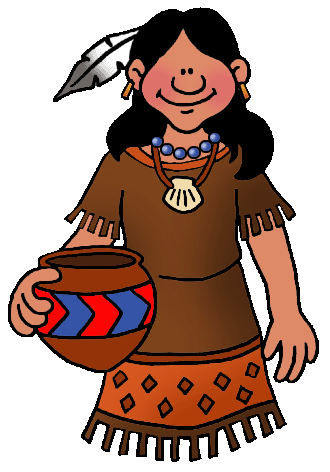Northeast Woodlands
The Northeast Woodlands Native Indians cover the areas of the First Nation bands that lived in the Midwestern states of the U.S. and Southeastern Canada and are broken down into three major areas:
- Coastal
- Saint Lawrence Lowlands
- Great Lakes-Riverine zones

Those that were considered to be “coastal” lived in Canada’s Atlantic Provinces, the U.S. Atlantic seaboard, and then south to North Carolina.
The Saint Lawrence Lowlands tribes lived in Southern Ontario, upstate New York, the Susquehanna Valley, and most of the Saint Lawrence River area. The Great Lakes-Riverine covered the rest of the northeast’s inlands.
There were two distinct types of Northeast Woodlands Native Indians and they were based on the types of homes or shelters that they used. Some of the tribes created permanent structures and others had temporary homes.
Each type depended upon the resources and materials available in their areas. Some involved “wigwams” that were also called Birchbark houses and Longhouses.
Life in the tribe
Many of these tribes tended to live close to water and there was a lot of inter-tribal war. For those tribes that were in permanent villages, they built added protection by creating fencing with reinforced dirt.
There was a lot of natural resources in various types of trees and they used these for their shelter, food, clothing, and decorations. There was also an abundance of small and large game for the hunters.

Beliefs
As with almost all of the Native Indians, the Northeast Indians shared many of the same belief doctrines.
The North American and Canadian indigenous peoples believed that everything, including all natural objects, had souls or sprits.
This belief system extended to natural conditions such as rain and thunderstorms, as well as geography that included caves, rivers, and mountains.
Crop Festivals
Woodland tribes were known for their crop festivals with one of the most important being the Green Corn festival. The celebrations including lots of food and music made with drums and rattles.
The people had legends passed down from one generation to the next and in the festival they would have heroic figures called “transformers” that they give credit to for changing the world into its current condition.
Facts about Northeast Woodlands Native Americans
- Woodland Indians had two primary languages: Algonquian and Iroquoian.
- The Woodland tribes made use of face paint as part of their belief to protect them in their wars and against evil spirits, and as a way to scare their enemies.
- Most of the tribes within the Northeastern groups were a combination of hunter-gatherers, farmers, fishers, and trappers.
- For those that lived along with rivers, streams, and ocean, they hunted whales, seal, fish, and shell fish. In the woodlands they hunted raccoon, white-tailed deer, moose, squirrel, bear, caribou, and beaver.
- Most of the farmers within Northeastern group grew squash, pumpkin, tobacco, beans, and corn (maize)
- Their clothing was minimal in the summer time, however, they used animal skins also known as “buckskin” for their winter clothing.
- The culture of the Northeast included the Iroquoian groups that were considered to be warlike and aggressive. They often attacked other villages and those living in their area knew that they had to protect themselves from their raids.
What did you learn?
What is one of the biggest festivals that the Northeast Woodland tribes are known for?
Green Corn Festival
Which Northeast Woodland tribe is thought to be the most warlike?
Iroquoian
What are the two main languages of the Northeast Woodland tribes?
Algonquian and Iroquoian
Why did the Northeast Woodland tribes use facepaint?
Protect from evil spirits, in war, and to scare their enemies
What is the Native Indian word for corn?
Maize
What are the 5 main crops of the Northeast Woodland tribes?
Squash, pumpkin, tobacco, beans, and corn (maize)
Other Resources
wikipedia.org – Indigenous peoples of the Northeastern Woodlands
warpaths2peacepipes.com – Woodland Indians
khanacademy.org – American Indian culture of the Northeast



